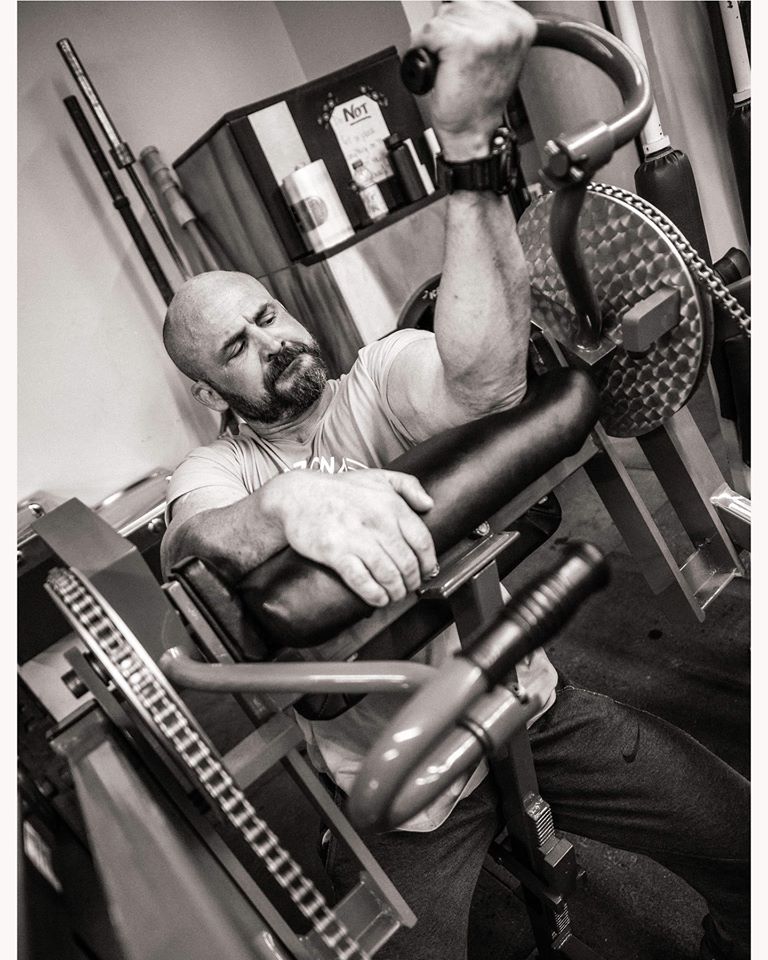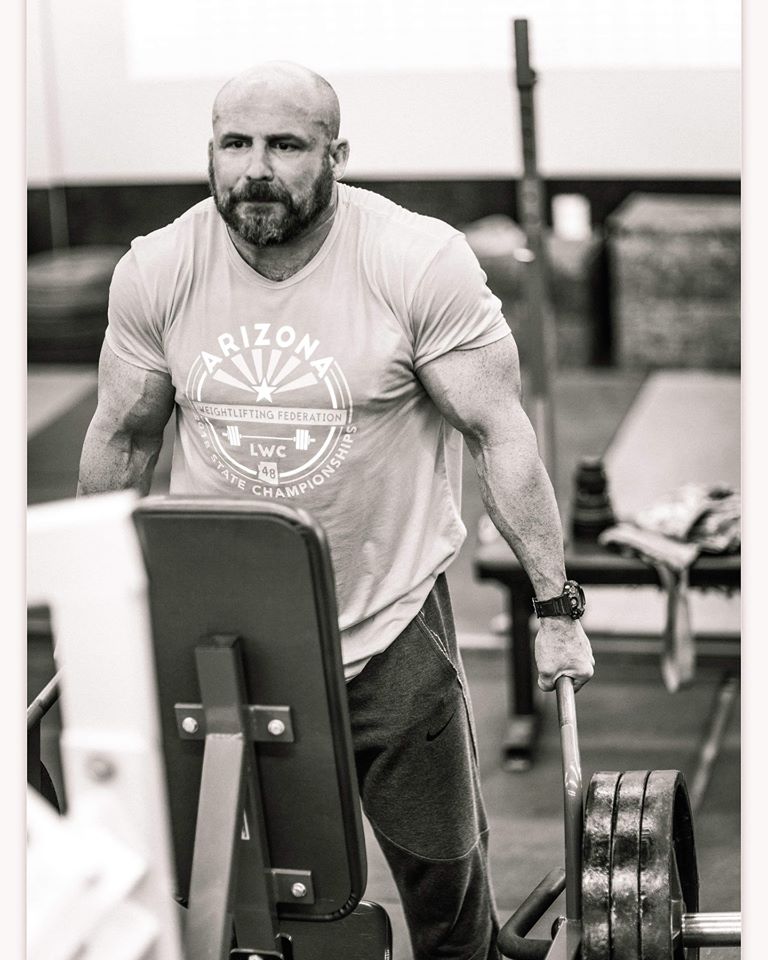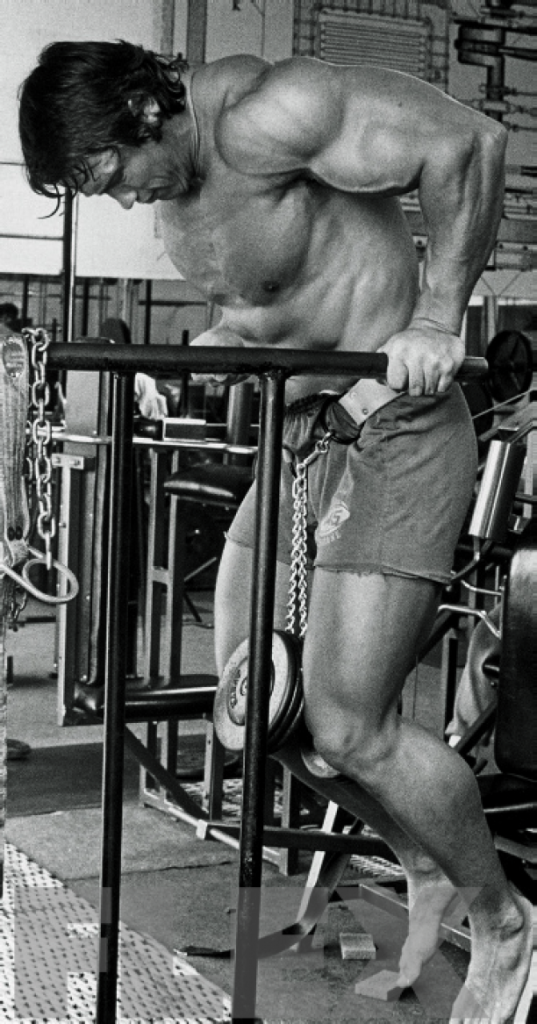In the most basic terms, Hypertrophy refers to an increase in the size of a…
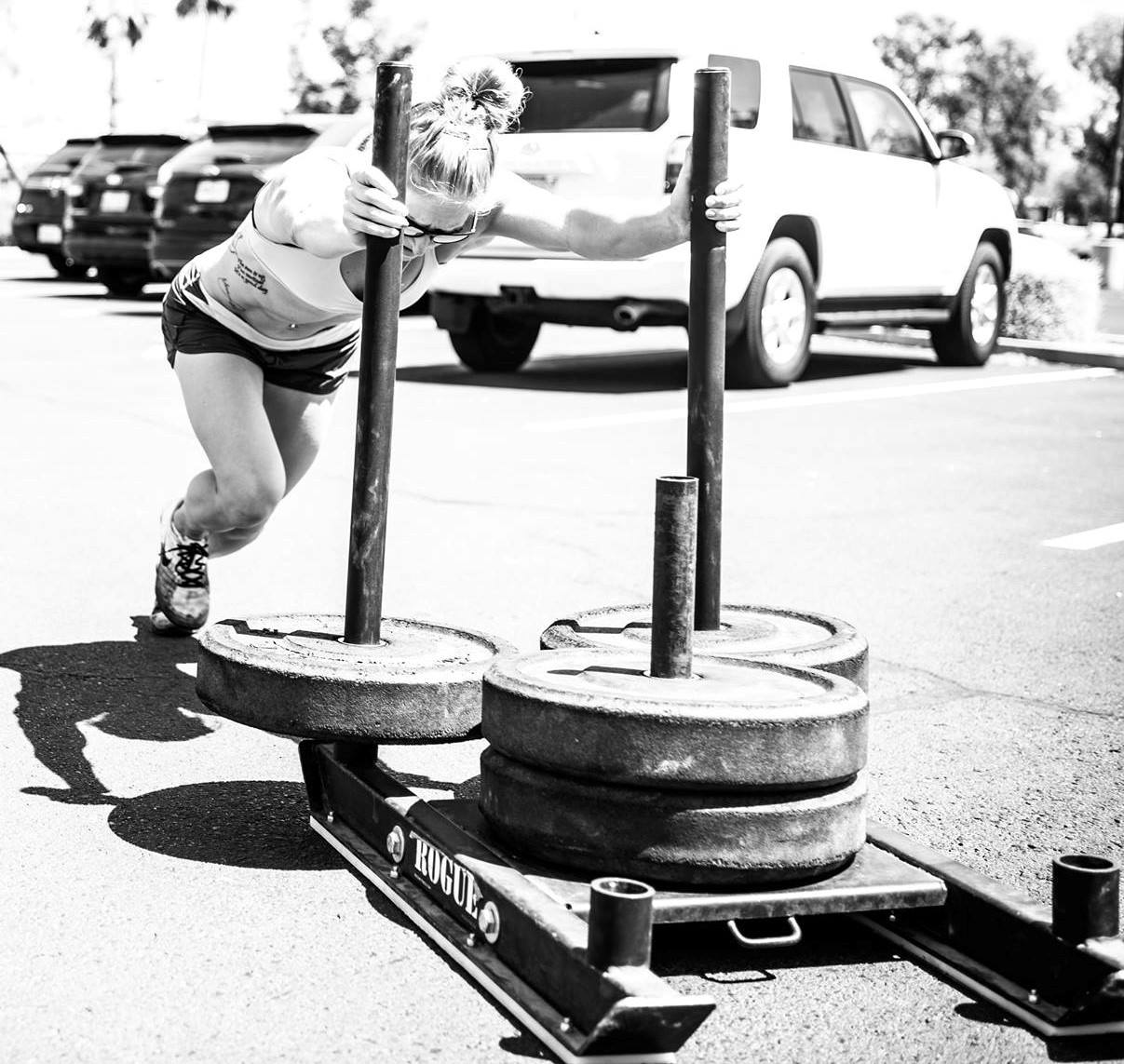
9 Conditioning Workouts for the Sled
The sled is a versatile and powerful tool. Sled training can be used to develop conditioning, speed, strength, and may even be used as a means of active recovery. This article will primarily focus on the sled as a conditioning tool.
Sprinting vs. Sleds
There are two significant differences between sprint training and sled training. Because the sled provides resistance, it allows athletes to train with reduced eccentric loading and reduced impact (because you’re moving slower)
Eccentric Loading
The eccentric phase of a movement involves the controlled lengthening of the muscle while under tension. This controlled lengthening causes significant damage to the muscle. The eccentric portion of running involves the amortization phase of the leg swing and controlling contact with the ground. Comparatively speaking, training with sleds creates low eccentric demand on the musculature. This is not to say that the eccentric portion of movement doesn’t have value— it can be an immense training stimulus, but it comes at a high cost in terms of recovery.
Speed
Due to the speed of movement, sprinting creates extremely high levels of force on the feet and legs. These forces are often higher than the force that the body experiences during strength training. Speed is the difference. The sled slows down the rate at which the legs cycle relative to sprinting and thereby reduces impact on the body.
Push vs Pull
When using these workouts, you can perform them as either a push or pull. The two approaches have similarities and differences. Both pushing and pulling create a significant demand on the musculature of the lower body and both styles can be very metabolically demanding. The demands of training with sleds can also be manipulated by moving your hands higher or lower on the sled. Pushing on the low handles is a whole other level of nasty. Based on my experience, pushing the sled tends to put more stress on the anterior muscles of the legs and pulling tends to be more demanding on the posterior muscles. This varies depending on hand positioning and degree to which you engage the knee vs hip.
Fast vs Slow
Sled workouts can also be varied based on speed. You can use less weight and focus on moving fast (traditional approach to using sleds to develop speed) or you can load it up and get the work done, no matter how slow you’re moving. When using the sled to train conditioning, I prefer to go heavy and just keep moving. Here are a couple of rules that can be used to ensure that the workout is achieving the desired effect:
1. If you drop below the desired speed, remove weight prior to the next set.
2. If you’re working heavier, but want to be sure the athlete is moving continuously, make the rule that if you stop moving, you remove weight prior to starting the next set.
Load Prescription
Two sleds of the same weight may provide very different levels of resistance. A few of the factors that contribute to this include:
1. The surface on which the sled is being used.
2. The surface of the skids.
3. The amount of surface area in contact with the ground.
Because of this variation, it’s important to develop another means of prescribing loads for a workout. In time, you will become familiar with your sleds, the surfaces on which you push them, and other factors that may affect appropriate loading. It is often more effective to give a description of the desired training effect than it is to prescribe a specific load.
The coach can set criteria to guide loading through various means:
1. Prescribe a desired time frame for completing a specific distance.
2. Require that the weight be light enough that the athlete is not forced to walk.
3. Use load as a means of scoring the workout.
Shuttles
I like to use a shuttle format for a couple of reasons; it requires less space and facilitates partner workouts. If the workout calls for shuttles of 20yrds, 40yrds and 60yrds, you would set cones at 10yrds, 20yrds and 30yrds. Down and back makes it easy to work with a partner and to change weights.
Sled workouts
The following is a list of workouts that can be applied for multiple purposes. The sled can be pushed or pulled, significantly changing the demands of the workout. These workouts can also be done with a priority on load or speed. When training with a focus on load, it is acceptable to move the sled at a slow speed (a walk). When speed is the priority, the weight must be light enough to allow the athlete to move the sled at the desired speed.
Workout 1
This is a workout that Joe DeFranco shared online about 10 years ago. If I remember correctly, they referred to it as “The Prowler Challenge”. They were using roughly 185lbs, and pushing on pavement with metal skids (plastic skids make things much easier).
“The Prowler Challenge”
8 rounds:
40yrds Sled Push
(Rest 1:00)
Total distance: 320yrds
Workout 2
“Descending Recovery”
3 rounds:
40yrds Sled Push
(rest 1:00)
40yrds Sled Push
(rest :45)
40yrds Sled Push
(rest :30)
40yrds Sled Push
(rest :15)
40yrds Sled Push
*rest 5:00 between rounds
Total distance: 600yrds
Workout 3
“Short Shuttles”
The recoveries in this workout are the time that it takes your partner to complete their shuttle. If you’re training without a partner, follow a 1-to-1 work-to-rest ratio. The workout can be completed by either starting with the shortest distance or by starting at the longest distance and working down.
5 rounds:
20yrds Sled Push Shuttle
(Rest while your partner pushes)
40yrds Sled Push Shuttle
(Rest while your partner pushes)
60yrds Sled Push Shuttle
(Rest 2:00 between rounds)
Total Distance: 600yrds
Workout 4
“Short Shuttles With a Chaser”
The following is a variation of the “Short Shuttle” workout. Perform three rounds of short shuttles then, take a recovery and complete one long push or pull (the opposite of what you did on the short shuttles).
3 rounds:
60yrds Shuttle (30yd out and back)
(Rest while your partner pushes)
40yrds Shuttle (20yd out and back)
(Rest while your partner pushes)
20yrds Shuttle (10yd out and back)
(Rest 2:00 between rounds)
Rest 5:00
400yrds Pull
Total Distance: 760yrds
Workout 5
“Go long”
This can be completed as an individual workout or with a partner, alternating work as needed.
For time:
400yrds Sled Push
(rest 5:00)
400yrds Sled Pull
Total Distance: 800yrds
Another version of “Go long” is to simply pick a distance (for example one mile) and get to work.
Workout 6
“Long Shuttles”
This workout can be set up using a 40yd distance. Complete five lengths for the first set, four lengths for the second set, and so on. (We did this with 225lbs, on pavement with plastic skids. It was brutal.)
For time:
200yrds Sled Push Shuttle
(rest while your partner works)
160yrds Sled Push Shuttle
(rest while your partner works)
120yrds Sled Push Shuttle
(rest while your partner works)
80yrds Sled Push Shuttle
(rest while your partner works)
40yrds Sled Push
Total Distance: 600yrds
Workout 7
“Ascending Load”
Push the sled for a 20yrd shuttle, immediately add weight and repeat the 20yrd shuttle. Continue until you can no longer complete the 20yd push without stopping.
If you’re feeling frisky, work your way back down, removing weight with each push.
Continue until failure:
20yrds Sled Push Shuttle (45lbs)
20yrds Sled Push Shuttle (90lbs)
20yrds Sled Push Shuttle (135bs)
20yrds Sled Push Shuttle (180lbs)
20yrds Sled Push Shuttle (225lbs)
20yrds Sled Push Shuttle (270lbs)
20yrds Sled Push Shuttle (315lbs)
20yrds Sled Push Shuttle (360lbs)
*No rest between pushes
Total distance will vary
Workout 8
“Death by Sled”
This workout doesn’t work well as a pulling workout. The turns get too cumbersome and disrupt your ability to work.
A fun twist on this workout is to do it several times in a row with rest equal to the amount of time that it took you to complete the prior workout. Get your heavy work done the first time and then drop weight on each successive workout.
For distance:
Minute 1: 10yrds Sled Push
Minute 2: 20yrds Sled Push Shuttle (2x 10yd)
Minute 3: 30yrds Sled Push Shuttle (3x 10yd)
Minute 4: 40yrds Sled Push Shuttle (4x 10yd)
Minute 5: 50yrds Sled Push Shuttle (5x 10yd)
*Continue until you fail to complete prescribed work
Total distance will vary
Workout 9
“Max”
This one is pretty straight forward, choose a distance and work up to the heaviest weight that you can move over that distance, without stopping. The focus of this workout is clearly strength, but it can be surprisingly taxing. When training purely for strength, take full recoveries between sets.
August Schmidt
-Bachelor of Scie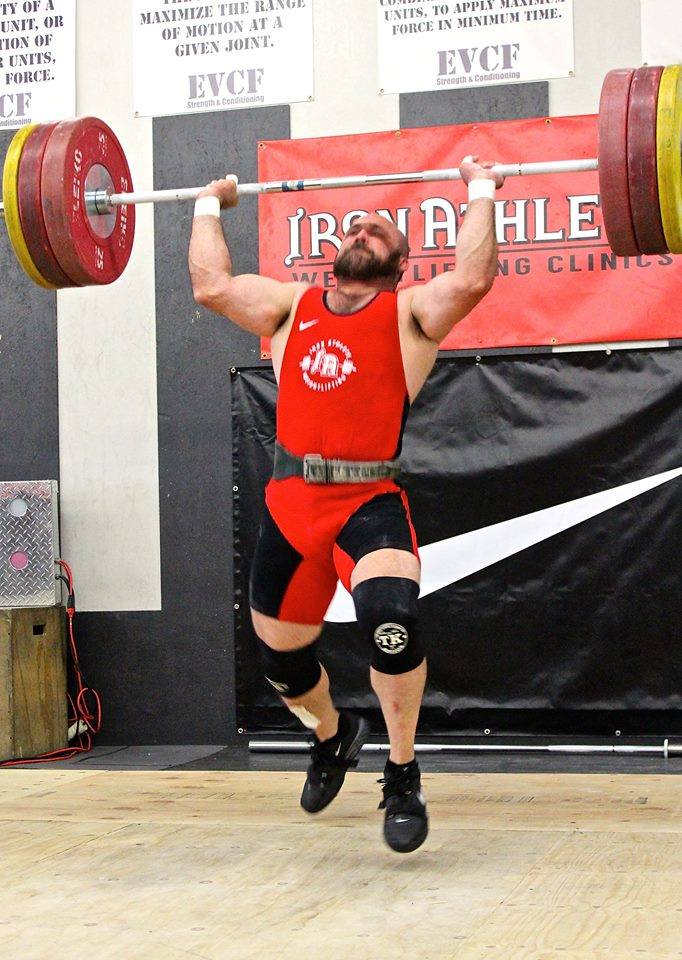 nce, Auburn University 1997
nce, Auburn University 1997
-Master of Education, Northern Arizona University 2005
-National Strength & Conditioning Association, CSCS 2000 (not current)
-USA Weightlifting Club Coach 2001
-CrossFit Level 1 Instructor 2009
-USA Weightlifting National Coach 2012
-EVCF Regional Team Coach 2013, 2014, 2015, 2016, 2017
-EVCF CrossFit Games Team Coach 2014
-Masters National Record Holder: Snatch 130kg & Total 287kg (105kg 40-44)
-5 x American Masters Weightlifting Champion
-5 x American Masters – Best Lifter (2 x 35-39yrs, 3 x 40-44yrs)
-3 x Masters Nationals Weightlifting Runner-up
-President of Arizona Weightlifting Federation – LWC 48, 2016-current
Cover photo credit: Brad Rogers @brogersphoto
